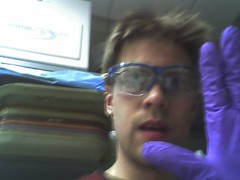What the heck is going on?
Hwang Woo-Suk: Stem Cells
Rusi Taleyarkhan: Sonofusion (possibly)
And now... Ian Wilmut: Dolly?
Admittedly, this new case seems to be a bit smaller in scale than the others. Hwang Woo-Suk blatantly lied about results and doctored data; the evidence is starting to suggest that Taleyarkhan did as well. In comparison, Wilmut just seems to have taken credit for the work of others in his lab (a trait archetypally common amongst Professors heading up labs, although I've seen no evidence thus far that it is actually common)... but at least the work was actually done.
But what's going on? These are three of the biggest publications of the last decade, and they're all being tinged with fraud and misconduct. Of course, it's easier to publish something important if you're going to rig your data. But the questions for me still stand: where are we going wrong? Or are we going right?
Let's break down the possibilities from my perspective:
1. This level of fraud and misconduct has always been occasionally occurring and eventually publicized, and I'm just young enough and inattentive enough that I didn't hear about previous generations.
2. This level of fraud and misconduct has always been occurring, but we're finally good enough at detecting it that it's coming to light.
3. In some fashion, the system is breaking down and starting to allow fraud and fraudulent claims of authorship to slip through.
As above, so below: is this sort of fraud being duplicated in lower-tier research, or is it mostly restricted to the race for big, top-tier achievements?
Finally, it's also worthy of note that Nature has some egg on their face, after they've been gloating about Science allowing the first two to slip through. Admittedly, publishing an article where someone falsely takes credit for someone else's work is not in the same league as publishing a dishonest article, but it's still a sign that the system needs some sort of fixing.


0 Comments:
Post a Comment
Send Haloscan trackback ping
<< Home